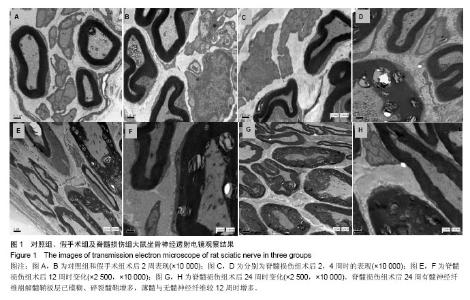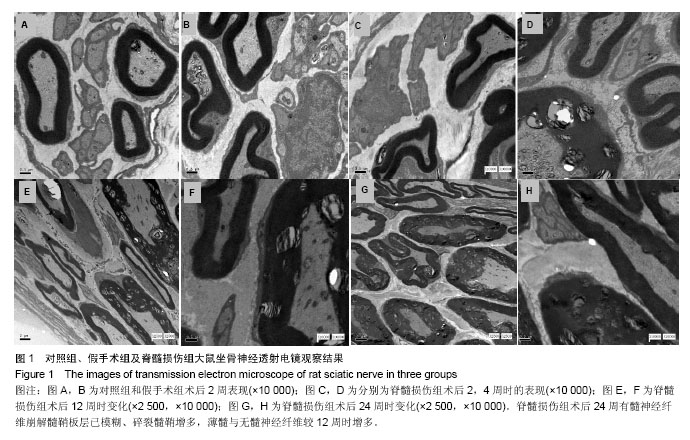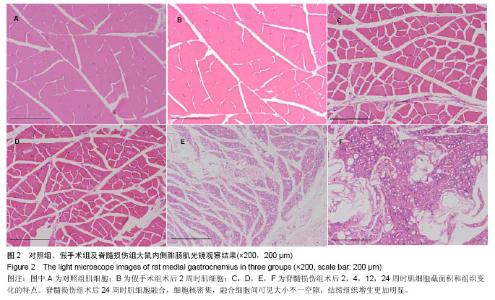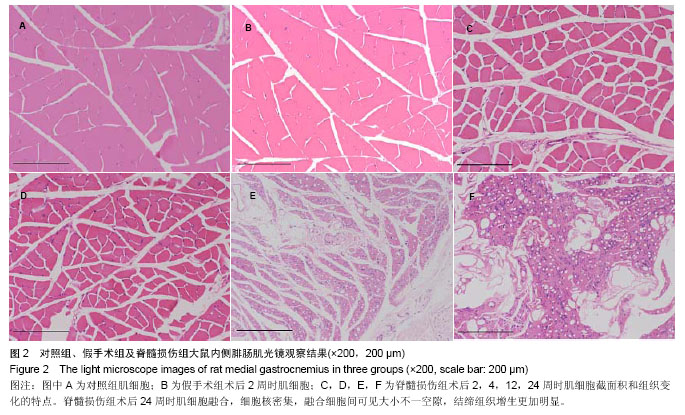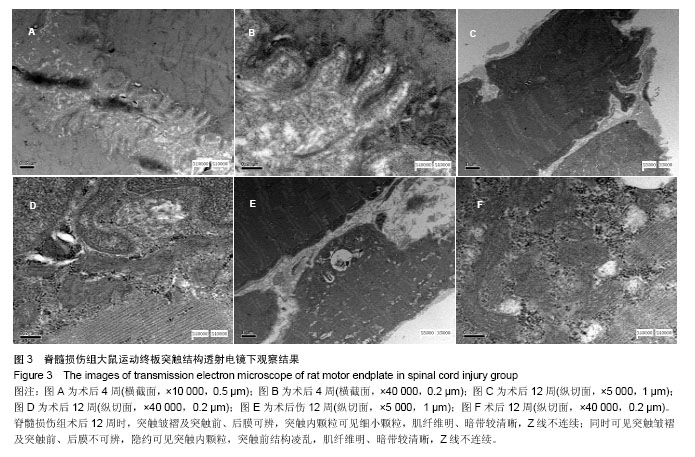| [1]Mcbride RL, Feringa ER. Ventral horn motoneurons 10, 20 and 52 weeks after T-9 spinal cord transection. Brain Res Bull.1992;28(1):57-60.
[2]张少成,郑旭东,修先伦,等.脊髓损伤后周围神经病理改变的初步研究及临床观察[J].中华显微外科杂志,2000,23(3):215-216.
[3]张庆民,关骅,洪毅.完全横断性脊髓损伤后跨神经元变性的实验研究[J].中国脊柱脊髓杂志,2006,16(11):840-842, 插1.
[4]Aoki M, Kishima H, Yoshimura K, et al. Limited functional recovery in rats with complete spinal cord injury after transplantation of whole-layer olfactory mucosa: laboratory investigation.J Neurosurg Spine.2010;12(2):122-130.
[5]Mrowczynski W, Celichowski J, Krutki P, et al.Time-related changes of motor unit properties in the rat medial gastrocnemius muscle after spinal cord injury. I. Effects of total spinal cord transection.J Electromyogr Kinesiol.2010;20(3):523-531.
[6]段平国,刘德明,杨宝林.脊髓半横断损伤后大鼠运动终板的氯化金染色研究[J].四川解剖学杂志,2006,14(3):48-49.
[7]Burns AS, Jawaid S, Zhong H, et al.Paralysis elicited by spinal cord injury evokes selective disassembly of neuromuscular synapses with and without terminal sprouting in ankle flexors of the adult rat. J Comp Neurol. 2007;500(1): 116-133.
[8]Rigoard P, Buffenoir K, Chaillou M, et al. [Morphological study of CNS lesions and the consequences on rat neuromuscular junction and peripheral nerve using confocal laser scanning microscopy and Koelle's technique]. Neurochirurgie.2009;55 Suppl 1:S110-S123.
[9]Landry E, Frenette J, Guertin PA. Body weight, limb size, and muscular properties of early paraplegic mice. J Neurotrauma. 2004;21(8):1008-1016.
[10]Hutchinson KJ, Linderman JK, Basso DM. Skeletal muscle adaptations following spinal cord contusion injury in rat and the relationship to locomotor function: a time course study. J Neurotrauma.2001;18(10):1075-1089.
[11]Castro MJ, Apple DJ, Hillegass EA, et al. Influence of complete spinal cord injury on skeletal muscle cross-sectional area within the first 6 months of injury. Eur J Appl Physiol Occup Physiol.1999;80(4):373-378.
[12]Gorgey AS, Dudley GA. Skeletal muscle atrophy and increased intramuscular fat after incomplete spinal cord injury. Spinal Cord.2007;45(4):304-309.
[13]Dupont-Versteegden EE, Houle JD, Gurley CM, et al. Early changes in muscle fiber size and gene expression in response to spinal cord transection and exercise. Am J Physiol.1998;275(4 Pt 1):C1124-C1133.
[14]Carter JG,Sokoll MD,Gergis SD.Effect of spinal cord transection on neuromuscular function in the rat. Anesthesiology.1981;55(5):542-546.
[15]苏增艳.脊髓重建管对T8损伤大鼠后肢不同类型肌纤维运动终板的调节与维持[D].北京:首都医科大学,2010.
[16]王瑜.防治人工体神经—内脏神经反射弧术后失神经肌萎缩的实验研究[D].武汉:华中科技大学,2006.
[17]苏增艳,杨朝阳,李晓光.脊髓重建管对T8损伤大鼠后肢运动终板的调节与维持[J].中国康复理论与实践,2010,16(3):205-208.
[18]周旋.成年大鼠脊髓完全性横断伤及再生和坐骨神经损伤及再生后运动终板变化的实验研究[D].北京:首都医科大学,2006.
[19]Liu Y, Grumbles RM, Thomas CK.Electrical stimulation of embryonic neurons for 1 hour improves axon regeneration and the number of reinnervated muscles that function. J Neuropathol Exp Neurol. 2013;72(7):697-707.
[20]Gransee HM, Zhan WZ, Sieck GC,et al. Targeted delivery of TrkB receptor to phrenic motoneurons enhances functional recovery of rhythmic phrenic activity after cervical spinal hemisection.PLoS One. 2013;8(5):e64755.
[21]Grumbles RM, Liu Y, Thomas CM,et al. Acute stimulation of transplanted neurons improves motoneuron survival, axon growth, and muscle reinnervation.J Neurotrauma. 2013; 30(12):1062-1069.
[22]Nicaise C, Putatunda R, Hala TJ, et al. Degeneration of phrenic motor neurons induces long-term diaphragm deficits following mid-cervical spinal contusion in mice.J Neurotrauma. 2012 Dec 10;29(18):2748-2760.
[23]Nicaise C, Hala TJ, Frank DM, et al. Phrenic motor neuron degeneration compromises phrenic axonal circuitry and diaphragm activity in a unilateral cervical contusion model of spinal cord injury.Exp Neurol. 2012;235(2):539-552.
[24]Bullinger KL, Nardelli P, Pinter MJ, et al.Permanent central synaptic disconnection of proprioceptors after nerve injury and regeneration. II. Loss of functional connectivity with motoneurons.J Neurophysiol. 2011;106(5):2471-2485.
[25]Riley DA, Burns AS, Carrion-Jones M, et al. Electrophysiological dysfunction in the peripheral nervous system following spinal cord injury.PM R. 2011;3(5):419-425.
[26]Xu QG, Forden J, Walsh SK, et al.Motoneuron survival after chronic and sequential peripheral nerve injuries in the rat.J Neurosurg. 2010;112(4):890-899.
[27]Master D, Cowan T, Narayan S,et al.Involuntary, electrically excitable nerve transfer for denervation: results from an animal model.J Hand Surg Am. 2009;34(3):479-487,
[28]Campos LW, Chakrabarty S, Haque R, et al.Regenerating motor bridge axons refine connections and synapse on lumbar motoneurons to bypass chronic spinal cord injury.J Comp Neurol. 2008;506(5):838-850. |
